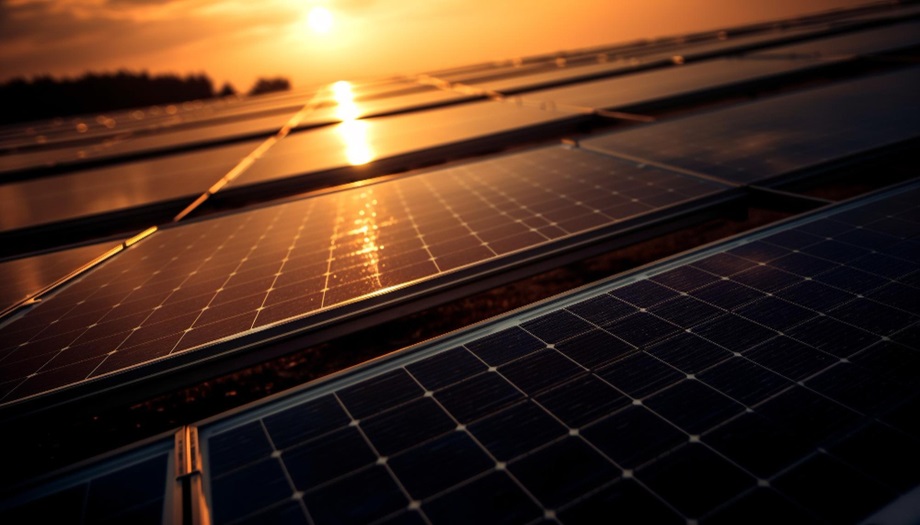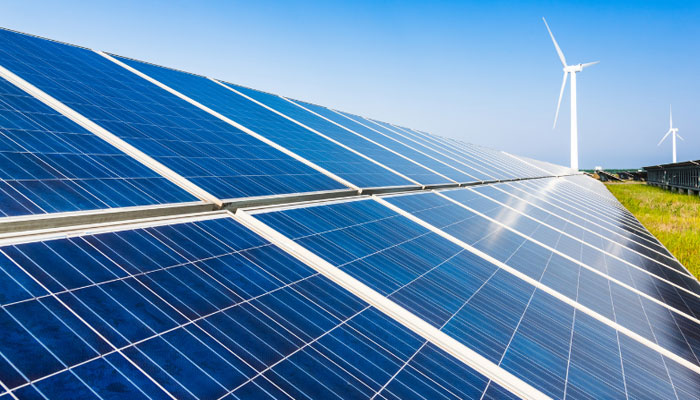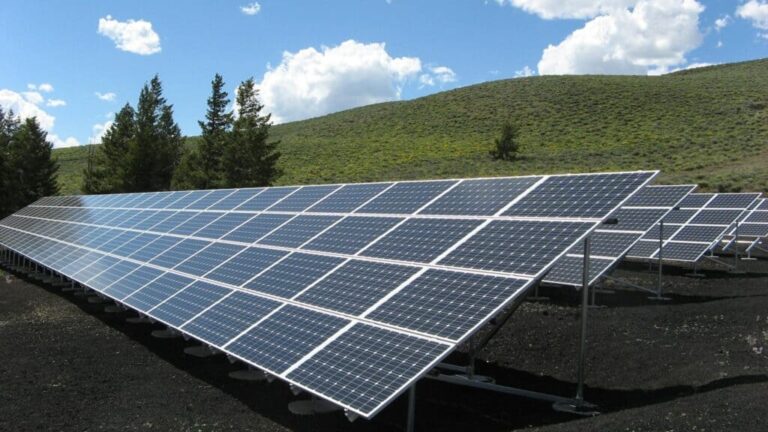Harnessing the Sun: The Future of Solar Panels in Renewable Energy
In the quest for sustainable energy sources, solar panels have emerged as a beacon of hope, offering a clean and renewable alternative to traditional fossil fuels. This article delves into the realm of solar energy, exploring its various facets, from types and advantages to challenges and future prospects.
Introduction to Solar Panels
What are Solar Panels?
Solar panels, also known as photovoltaic (PV) panels, are devices that convert sunlight into electricity through the photovoltaic effect. This process involves the direct conversion of sunlight into electrical energy using semiconducting materials.
Importance of Solar Panels in Renewable Energy
In an era marked by climate change and environmental degradation, the significance of solar panels cannot be overstated. As a renewable energy source, solar power offers a sustainable solution to reduce reliance on finite fossil fuels and curb greenhouse gas emissions.
Growth of Solar Energy in the Global Energy Mix
Over the past decade, solar energy has experienced exponential growth, with installations surging worldwide. This growth can be attributed to advancements in technology, declining costs, and increasing awareness of the environmental benefits of solar power.
Types of Solar Panels
Photovoltaic (PV) Solar Panels
Definition and Working Principle
Photovoltaic solar panels harness sunlight to generate electricity through the photovoltaic effect. When sunlight strikes the surface of a solar panel, it excites electrons in the semiconductor material, creating an electric current.
Monocrystalline vs. Polycrystalline Solar Panels
Monocrystalline solar panels are made from a single crystal structure, offering higher efficiency and sleeker aesthetics compared to polycrystalline panels, which are composed of multiple silicon crystals.
Thin-film Solar Panels
Thin-film solar panels employ a different manufacturing process, using layers of photovoltaic material deposited on a substrate. While generally less efficient than crystalline silicon panels, thin-film technology offers flexibility and lower production costs.
Concentrated Solar Power (CSP) Panels
Explanation of Concentrated Solar Power Technology
Concentrated Solar Power (CSP) systems utilize mirrors or lenses to concentrate sunlight onto a small area, generating heat that drives a steam turbine to produce electricity.
How CSP Panels Work
CSP panels focus sunlight onto a receiver, typically located at the top of a tower or along a linear axis. The concentrated sunlight heats a transfer fluid, which then generates steam to drive a turbine.
Applications of CSP Panels
CSP technology is commonly used in utility-scale power plants, where large arrays of mirrors or heliostats concentrate sunlight onto a central receiver. CSP plants can also incorporate thermal energy storage to provide dispatchable power.
Advantages of Solar Panels
Clean and Renewable Energy Source
Solar panels produce electricity without emitting greenhouse gases or other pollutants, making them a clean and sustainable energy source.
Reduction in Greenhouse Gas Emissions
By displacing fossil fuel-based electricity generation, solar panels help mitigate climate change by reducing carbon dioxide emissions and other pollutants.
Energy Independence and Security
Solar energy offers countries and communities greater energy independence by tapping into an abundant and locally available resource.
Challenges in Solar Panel Adoption
Initial Costs and Return on Investment
While the cost of solar panels has declined significantly in recent years, upfront expenses remain a barrier to widespread adoption, particularly for residential and commercial installations.
Intermittency and Energy Storage
Solar energy production is inherently intermittent, as it depends on sunlight availability. Effective energy storage solutions are needed to address this variability and ensure a reliable power supply.
Land Use and Environmental Impacts
Large-scale solar installations can have environmental implications, including habitat disruption, land degradation, and water usage. Sustainable siting practices are essential to minimize these impacts.
Innovations in Solar Panel Technology
Efficiency Improvements
Ongoing research and development efforts are focused on enhancing the efficiency of solar panels, enabling higher power output from a given area of solar panels.
Cost Reductions
Advancements in manufacturing processes, materials, and economies of scale have contributed to significant cost reductions in solar panel production, making solar energy more affordable and accessible.
Integration with Energy Storage Systems
The integration of solar panels with energy storage technologies, such as batteries, allows for greater flexibility and reliability in renewable energy deployment, enabling solar power to meet demand even when the sun isn’t shining.
Solar Panel Installation and Maintenance
Steps Involved in Solar Panel Installation
Solar panel installation typically involves site assessment, system design, permitting, equipment procurement, installation, and commissioning.
Maintenance Requirements for Solar Panels
Routine maintenance, including cleaning, inspection, and performance monitoring, is essential to ensure optimal solar panel efficiency and longevity.
Tips for Optimizing Solar Panel Performance
Maximizing solar panel performance involves factors such as proper orientation, tilt angle, shading mitigation, and regular maintenance.
Applications of Solar Panels
Residential Solar Power
Residential solar installations allow homeowners to generate their own electricity, reduce their utility bills, and contribute to a cleaner environment.
Commercial and Industrial Solar Projects
Large-scale solar projects serve commercial and industrial facilities, providing renewable energy solutions that enhance sustainability and reduce operating costs.
Off-Grid Solar Solutions
Off-grid solar systems are used in remote areas without access to the electricity grid, providing power for homes, businesses, and communities where traditional utility infrastructure is lacking.
Environmental Impact of Solar Panels
Life Cycle Analysis of Solar Panels
The environmental impact of solar panels encompasses their entire life cycle, from raw material extraction and manufacturing to installation, operation, and end-of-life disposal or recycling.
Recycling and Disposal of Solar Panels
Efforts are underway to develop recycling technologies for solar panels, enabling the recovery of valuable materials such as silicon, glass, and metals to minimize waste and environmental impact.
Mitigation Strategies for Environmental Impacts
Various strategies, including sustainable manufacturing practices, responsible siting, and end-of-life management, are being implemented to mitigate the environmental impacts of solar panel production and operation.
Government Policies and Incentives
Renewable Energy Targets and Regulations
Many governments around the world have established renewable energy targets and regulations to promote the adoption of solar power and other clean energy sources.
Solar Energy Subsidies and Tax Credits
Financial incentives, such as tax credits, rebates, and feed-in tariffs, incentivize investment in solar energy systems, making them more economically viable for consumers and businesses.
Net Metering and Feed-in Tariffs
Net metering policies allow solar panel owners to offset their electricity bills by selling excess energy back to the grid, while feed-in tariffs provide guaranteed payments for renewable energy generation.
Future Trends in Solar Panel Technology
Perovskite Solar Cells
Perovskite solar cells represent a promising next-generation photovoltaic technology, offering high efficiency, low cost, and versatility in manufacturing.
Bifacial Solar Panels
Bifacial solar panels, which can capture sunlight from both the front and rear sides, are gaining popularity due to their increased energy yield and performance in various environments.
Solar Panel Aesthetics and Design
Advancements in solar panel aesthetics, including transparent and colored panels, as well as integrated building materials, are making solar power more visually appealing and adaptable to architectural designs.
Conclusion: The Bright Future of Solar Panels
Solar panels have transformed the renewable energy landscape, offering a clean, sustainable, and increasingly cost-effective alternative to fossil fuels. With continued innovation, supportive policies, and growing public awareness, solar power is poised to play a central role in powering a greener and more sustainable future.




